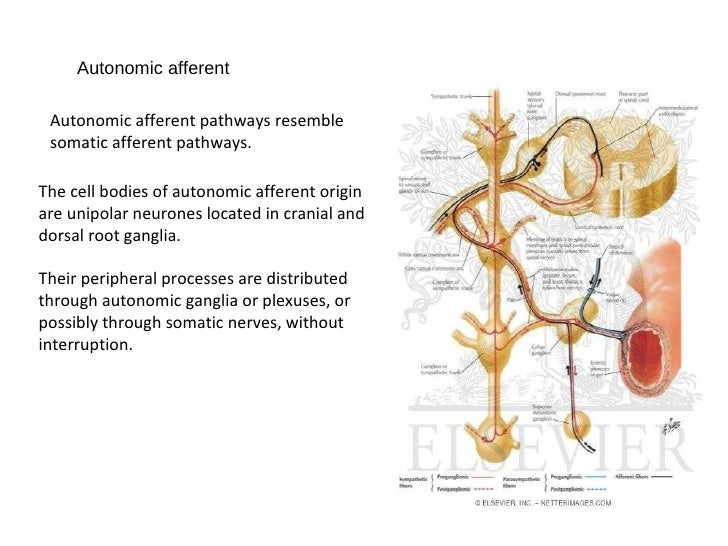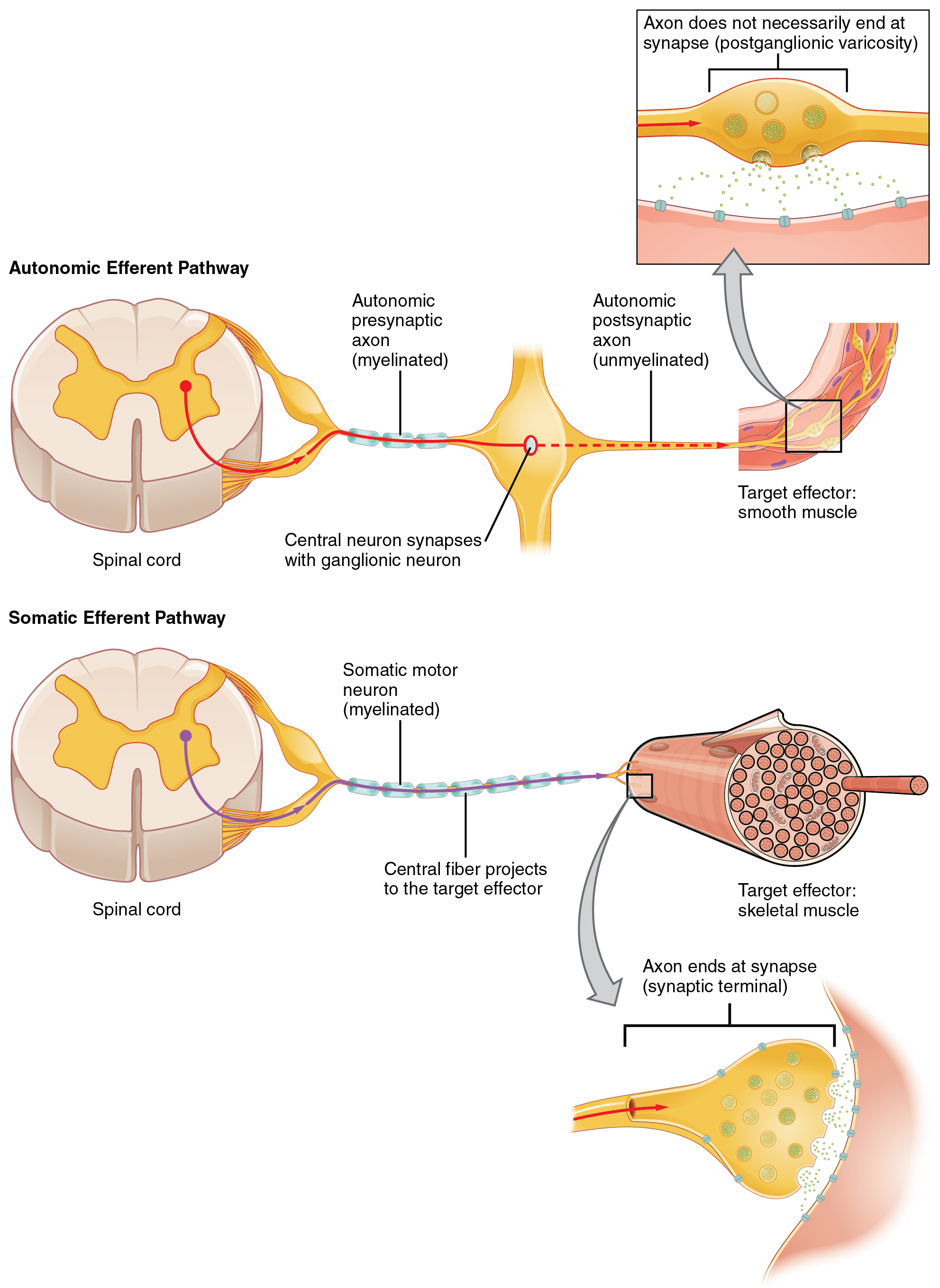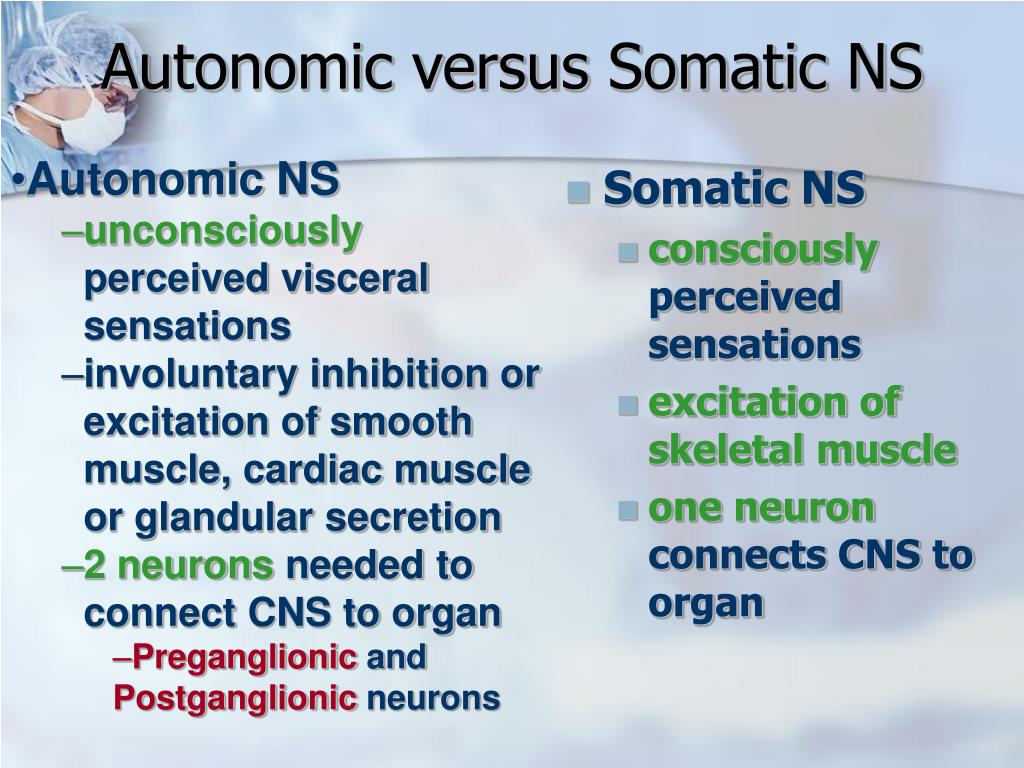

The withdrawal reflex has more components, such as inhibiting the opposing muscle and balancing posture while the arm is forcefully withdrawn, which will be further explored at the end of this chapter. That neuron sends a signal along its axon to excite the biceps brachii, causing contraction of the muscle and flexion of the forearm at the elbow to withdraw the hand from the hot stove. This triggers an action potential, which travels along the sensory fiber from the skin, through the dorsal spinal root to the spinal cord, and directly activates a ventral horn motor neuron.
Somatic nervous system pathway skin#
Sensory receptors in the skin sense extreme temperature and the early signs of tissue damage.

When you touch a hot stove, you pull your hand away. The distinction between the structures (i.e., anatomy) of the peripheral and central nervous systems and functions (i.e., physiology) of the somatic and autonomic systems can most easily be demonstrated through a simple reflex action. Peripheral sensory neurons receive input from environmental stimuli, but the neurons that produce motor responses originate in the central nervous system. The somatic nervous system is responsible for our conscious perception of the environment and for our voluntary responses to that perception by means of skeletal muscles. However, this misses an important point: somatic refers to a functional division, whereas peripheral refers to an anatomic division. However, whereas these two parts are closely linked in the central nervous system, they are usually separate in other areas of the body.The somatic nervous system is traditionally considered a division within the peripheral nervous system. For instance, if your body gets too hot, your involuntary nervous system increases the blood circulation to your skin and makes you sweat more to cool your body down again.īoth the central and peripheral nervous systems have voluntary and involuntary parts. The involuntary nervous system can react quickly to changes, altering processes in the body to adapt.
Somatic nervous system pathway full#
It can also send signals in the other direction – from the body to the brain – providing your brain with information about how full your bladder is or how quickly your heart is beating, for example. It does this by receiving signals from the brain and passing them on to the body. It is constantly active, regulating things such as breathing, heart beat and metabolic processes. The involuntary nervous system (vegetative or autonomic nervous system) regulates the processes in the body that we cannot consciously influence. The voluntary nervous system (somatic nervous system) controls all the things that we are aware of and can consciously influence, such as moving our arms, legs and other parts of the body. Regardless of where they are in the body, a distinction can also be made between voluntary and involuntary nervous system. All of the other nerves in the body are part of the peripheral nervous system (PNS). It is safely contained within the skull and vertebral canal of the spine. The central nervous system (CNS) includes the nerves in the brain and spinal cord. The nervous system has two parts, called the central nervous system and the peripheral nervous system due to their location in the body. The signals are then passed on via a long extension (the axon), which can be up to a meter long. The shorter extensions (called dendrites) act like antennae: they receive signals from, for example, other neurons and pass them on to the cell body. Each neuron has a cell body and various extensions. The brain alone has about 100 billion neurons in it.

There are many billions of nerve cells, also called neurons, in the nervous system. Metabolic processes are also controlled by the nervous system.

For example, if you touch a hot plate, you reflexively pull back your hand and your nerves simultaneously send pain signals to your brain. The nervous system takes in information through our senses, processes the information and triggers reactions, such as making your muscles move or causing you to feel pain. It is through the nervous system that we communicate with the outside world and, at the same time, many mechanisms inside our body are controlled. The nervous system is made up of all the nerve cells in your body.


 0 kommentar(er)
0 kommentar(er)
